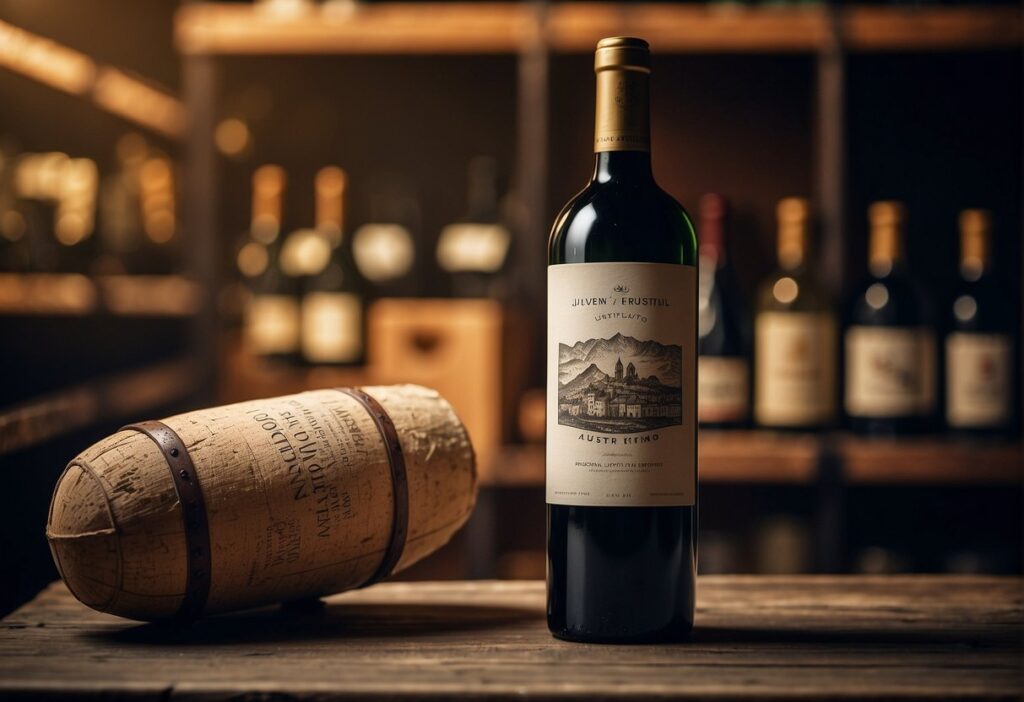Are you feeling overwhelmed by the chaos in your wine cellar? An organized wine cellar can transform your wine collecting experience into a more enjoyable and stress-free hobby. Organizing your wine cellar doesn’t just reduce clutter; it also helps you save money by preventing the accidental purchase of duplicate bottles and keeping track of what you have.

By creating a system to organize a wine cellar, you can easily find and enjoy your favorite bottles without the hassle of searching through piles of wine. Consider categorizing your wine collection either by region, type, or age. This approach not only makes it simpler to locate a particular bottle, but also highlights any gaps in your collection that you might want to fill.
Effective wine cellar organization can greatly enhance the enjoyment of your wine collection. By implementing a few strategic tips, you can ensure that each bottle is stored in the best possible conditions, extending its life and quality. A well-organized cellar brings not just a touch of elegance, but also a sense of accomplishment and peace.
Essentials of Wine Storage
Proper wine storage involves maintaining specific temperature and humidity levels. It ensures your wine ages well, preventing spoilage and preserving taste and aroma. Exploring these aspects will help you design an ideal environment for your wine collection.
Temperature Control
Keeping the right temperature is crucial for wine storage. Ideally, maintain it between 54 and 59 degrees Fahrenheit. Such conditions ensure wines age gracefully without temperature fluctuations causing damage. Too much variation can lead to expansion and contraction of the liquid, spoiling the wine’s flavor.
Consider using a wine cooler or wine fridge to keep the temperature stable. These appliances are specifically designed to maintain optimal temperatures consistently. Place thermometers in your wine cellar to monitor conditions and make quick adjustments as needed.
Also, avoid placing your wine storage near windows or doors that expose it to direct sunlight or drafts, which can lead to unwanted temperature changes.
Humidity Control
Managing humidity levels is equally important. Aim for a humidity range between 60% and 70%. This prevents corks from drying out, which can let air into the wine bottles and spoil the contents. Low humidity can lead to cork shrinkage, while high levels can cause mold growth on labels and corks.
Invest in a reliable hygrometer to measure humidity levels in your wine storage area. If your cellar is too dry, consider installing a humidifier. For those with too much moisture, a dehumidifier can help.
Keep your wine cellar well-ventilated, but avoid making it too breezy, as that can affect humidity control.
Designing Your Wine Cellar

Creating a wine cellar involves thoughtful planning and design to ensure your bottles are stored in optimal conditions. Pay attention to key design elements and personal preferences that will turn the space into a functional and enjoyable room.
Wine Cellar Design Elements
When designing your wine cellar, key components include lighting, temperature control, and storage systems. Proper lighting sets the ambiance, but it should be subtle to prevent any heat impact on the wine. Temperature control is crucial; ideal temperatures range between 45°F to 65°F with consistent levels. Consider installing a cooling system to maintain this range.
Storage systems like wine racks and shelving play a pivotal role. Use a mix of traditional wood or modern metal racks to accommodate different bottle sizes and display options.
Custom Wine Cellar Considerations
When tailoring a custom wine cellar, consider its size, style, and material choices. A smaller space might benefit from vertical storage solutions, while larger areas allow for elaborate layouts. Style preferences range from sleek, modern designs to rustic or vintage themes.
Material choice for wine cabinets or racks is important; wood types like mahogany add elegance, whereas metal racks provide a contemporary touch. Remember, the design should not only be visually appealing but also functional, ensuring easy access and proper aging of your wine collection.
Use apps or manual logs for tracking your inventory to manage your collection effectively.
Wine Collection Arrangement

Arranging your wine collection requires thoughtful consideration of various factors. By organizing by variety, region, vintage, and producer, you’ll make it easier to select the perfect bottle for any occasion.
Organize by Variety and Region
When organizing your wines, consider sorting them by grape variety. This helps in easily locating your cabernet sauvignon, merlot, or pinot noir when needed. Grouping wines this way simplifies selection based on your mood or food pairing.
Another effective method is to organize by region. Wines from areas like Bordeaux or Napa Valley have distinct profiles. This organization style lets you explore different regions conveniently. It also enhances appreciation for the unique characteristics each place imparts to the wines.
Combining both variety and region offers a structured way to showcase your collection. This dual approach brings clarity and enjoyment to accessing and appreciating your wines.
Organize by Vintage and Producer
Vintage plays a crucial role in the identity of a wine. Sorting your wines by vintage allows you to track when they are at their peak. This is particularly vital for collectors who enjoy tracking the aging process. Wines from exceptional years might deserve a special place in your collection.
Arranging wines by producer can also be beneficial. Top wine producers have a reputation for quality and consistency. Recognizing patterns among producers assists in understanding their distinct styles.
For instance, grouping wines from your favorite wine producers can help recall which bottles you might want to restock.
These approaches together create a precise and accessible system for curating your wine collection.
Inventory Management
Managing a wine collection efficiently requires choosing the right inventory method. Some people prefer digital solutions, while others opt for manual tracking. Each approach offers different advantages for organizing and maintaining your wine collection.
Digital Inventory Solutions
Using a wine inventory app can streamline the process of managing your collection. CellarTracker is a popular choice that helps you manage and organize your wines, providing detailed insights and tracking capabilities.
Digital solutions often allow you to scan bottle labels for easy data input. Platforms like InVintory offer user-friendly tools to help you find and categorize wines quickly.
These systems provide cloud storage, ensuring that your records are accessible anywhere. With apps, you can also set reminders for peak drinking times, enhancing your overall wine experience.
Manual Inventory Tracking
Manual tracking involves keeping a physical record or using spreadsheets to catalog your collection. This traditional approach can be more personalized but requires more effort and regular updates.
Creating an organized list with details such as wine name, vintage, location in the cellar, and tasting notes is crucial. Some prefer writing notes manually for a tactile and personal aspect to collection management.
However, it’s essential to regularly update your records to maintain accuracy. To simplify, consider maintaining a logbook or a structured spreadsheet. Though this approach lacks the automation of digital systems, it provides a tangible connection to your collection.
Maintenance and Upkeep

Keeping your wine cellar in top condition ensures the longevity of your collection. Regular maintenance protects both the wine and the environment where you store it.
Temperature and Humidity
Consistently check that the temperature remains between 55°F and 58°F. Also, make sure that the humidity stays between 60% and 70%. These conditions prevent corks from drying out and allowing air to enter the bottles.
Cleaning and Maintenance
Dust your wine racks and slat bins to prevent buildup. This helps maintain a clean environment for your bottles. Regularly inspect the structure for stability and anything unusual that might affect your wines.
Inventory Management
Conducting regular inventory checks helps you keep track of your collection. Use wine bottle tags to easily identify each bottle. These tags allow you to efficiently manage your wines and plan future purchases.
Structural Checks
Ensure that each part of your cellar, including the racks and bins, is intact. Also, tighten any loose components and replace any that show wear and tear. This practice supports the protection of your wines.
Routine Inspections
Inspect for leaks or changes in the cellar conditions. These might negatively affect your wines if ignored. Aim to resolve any issues promptly. Performing regular checks keeps your cellar in excellent shape.
Using wine tags is not only practical but also essential for keeping your wine collection well-organized. This practice saves time when looking for specific bottles and ensures consistent monitoring of your collection.

